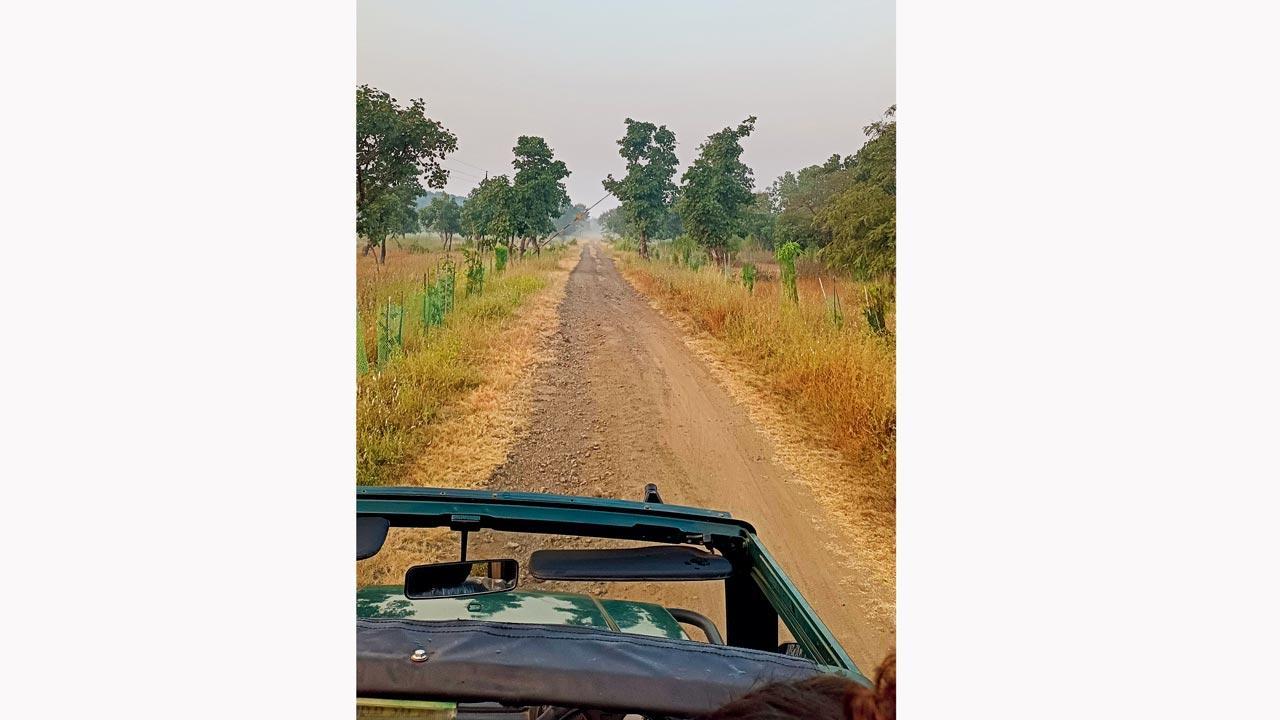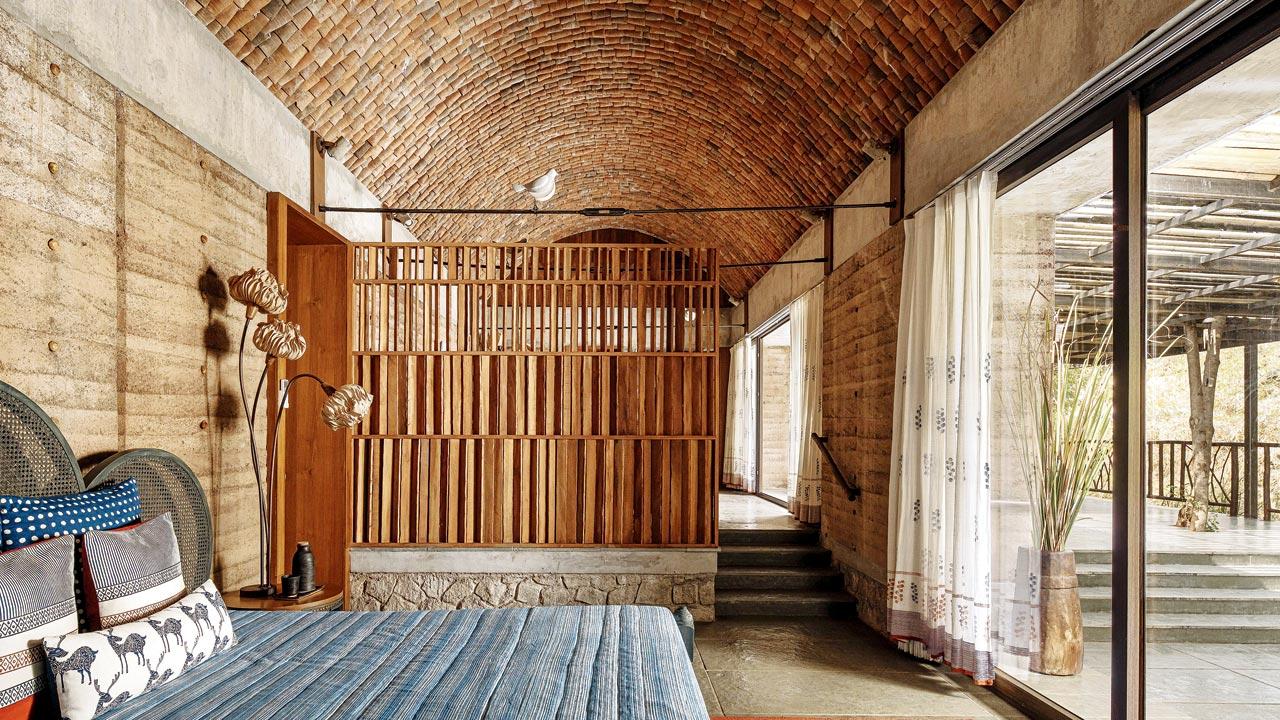Tipeshwar Wildlife Sanctuary has a new wildlife resort that strives to make luxury and sustainable living meet. And the urban dweller approves

Journey into the forest
Adventure
Tour & Taste
Relaxing
Educational
Ancient & Historical
For a Mumbaikar, a three-hour long drive from Nagpur’s Dr Babasaheb Ambedkar International Airport under the simmering October sun can feel unexpectedly longer. The landscape is sparse. Driver Manoj Bhakre describes it as a low-traffic period. It is a pleasant surprise for those who carry Saki Naka in their daily memories.
We are on our way to Tipeshwar Wildlife Sanctuary, a 150-square kilometer forest reserve in the heart of Maharashtra’s Yavatmal district. The sanctuary sprawls across the Patanbori and Pandarkwada ranges and remains fairly hidden from the glare of the common wildlife Instagrammer. It is the Tadoba-Andhari reserve, located four hours across on the NH930 that remains more popular. Starting with just a few cubs, Tipeshwar has now evolved into a sanctuary that houses close to 20 tigers along with a healthy population of sambals, chitals, Hanuman langurs and nilgais. The current ruler, a forest ranger informs us, is Zanjeer—the new male who has taken over the region. The name, he suggests, reflects the angry young man that he is.
 The unique vault-like structure of the roof helps keep the place well insulated and protected
The unique vault-like structure of the roof helps keep the place well insulated and protected
Despite its proximity to the Krishna, Purna and Tapti rivers, the district is not in its best avatar. It’s also notorious for farmer suicides. The swaying fields of cotton remind us that the state is the highest producer of this kharif crop in the country. But, the dominant occupation here is managing the forest, which brings in revenue and tourism.
It was a sum of these reasons that drew Keyur Joshi, former co-founder of MakeMyTrip and founder of Wildlife Luxuries to launch a resort in the sanctuary.
By the time we arrive at Tipai by Wildlife Luxuries— named after the patron goddess of the region--we are exhausted. The 15-villa property sits hidden amidst a surrounding buffer forest that measures 7-square kilometers. Not large enough to keep a tiger from wandering around, we wonder. Confirming our thoughts, forest ranger Rajesh Shankar remarks that the majestic creatures do sometimes pass this way. Among them is Talaabwali, a mother of three, who loves the reservoirs in the sanctuary —as her name suggests.
 A defoliated teak leaf
A defoliated teak leaf
The resort is well-protected, with each villa located at a distance from the next. While it offers privacy, the surrounding tall grasses and gardens lend it a feel of the forest before you even enter the sanctuary. The plantation, we learn, took over five years of research to create.
The villas themselves are constructed with sustainable material. The unique vault-like structure of the roof is a standout. Built in consultation with the Institute of Gandhian Studies in Wardha, the structure helps keep the place well insulated and protected. A remarkable addition is the construction of man-made ponds that harvest rainwater and help recycle it through the resort for use. In a district as starved for water as Yavatmal, it is an effective strategy. A phone call brings room service to your doorstep, with buggies for transport. Unless you are familiar with the terrain, a walk by yourself at night is not recommended. It can get very dark suddenly.
 Ambadi with charred pineapple; (right) Slow cooked raan, jowar bhakri and lal theccha
Ambadi with charred pineapple; (right) Slow cooked raan, jowar bhakri and lal theccha
It takes us a while to grow accustomed to the silence that envelops the space and the occasional chirping of a strange bird. There are quite a few unique sights as well. On a walk past the plantation, we spot a teak leaf—Palash--deveined of all its green foliage, leaving a skeletal structure that looks magical. It is the work of a teak defoliator moth, we learn. The only struggle is the silence of the night. For someone used to the chaos of a creaking fan, it takes an hour of a boring podcast to quieten the mental anxiety.
Another important reason for the visit is the presence of chef Amninder Sandhu. Her new ventures, Palaash and Perch, are an extension of her effort to bring a new flavour to the region. With her team—80 per cent of whom are local women—the chef is hoping to transform the local flavours with her refined style. Throw in her signature wood-fire cuisine, and you can expect a treat. We did.
The degustation menu for dinner brings to life a combination of local flavours. An ambadi Palash-style with charred pineapple starts off the dinner on a note of tang. This is followed by khatta meetha kashiphal, a palate cleanser. The ingredients might be local, but the plating is stylized and refined. This, the chef tells us, is the key difference. Her hope is that the women evolve into self-sustained chefs who can step up in her absence. We love the slow cooked raan served with jowar bhakri and thecha eaten taco-style, and the quail (saoji bater) with parathas.
Then, there is the magic of a mahua kala jamun and puran poli profiteroles that lift the dinner to another level. If that were not enough, each course is accompanied by a carefully curated wine list that suits the temper and flavour of the spices. After that, waking up early for a safari feels like a challenge. Yet, the promise of a tiger keeps us going.
We set out when the forest is still coming to life. It is a good 10-minute drive to get to the heart of the sanctuary. The one thing that immediately hits us is the crisp air. It feels strange to urban lungs.
Once you enter the sanctuary, it is a different story. The place feels empty, unless you are looking in the right place. And yet, the jungle somehow opens up to you like an old friend. She slowly reveals secrets as your eyes get used to the sunlight. A wonderful sight is the wood spider, hanging in perceivably thin air, waiting for its prey. “It is a female,” our ranger tells us, before pointing out to a smaller male on the same net. “She will kill him in the end,” he laughs. We restrain ourselves from making a Yass Queen reference, but it would have been worth it. It is the forest rangers and locals who hear and see things before us. A family of chitals hopping past the road or a hanuman langur—so called for its almost human appearance, or the calls of a peacock warning of tiger movement. Sadly, we spot no tigers. There is no affirmation of William Blake’s poetry for us. Yet, there is much that leaves us content.
How to get there
172 kms on the NH 44 from Dr Babasaheb Ambedkar International Airport, Nagpur. Or, a one-hour-47-minute drive from Adilabad Railway Station, turning into Tipai Resort.
Wildlife to spot
Chital or spotted deer
Sambar
Nilgai
Hanuman Langur
Want to hear from you
We are looking to visit and write about interesting places of stay and travel, near and far. If you wish to host us for a fair, engaging experience review, write to us at smdmail@mid-day.com
 Subscribe today by clicking the link and stay updated with the latest news!" Click here!
Subscribe today by clicking the link and stay updated with the latest news!" Click here!










